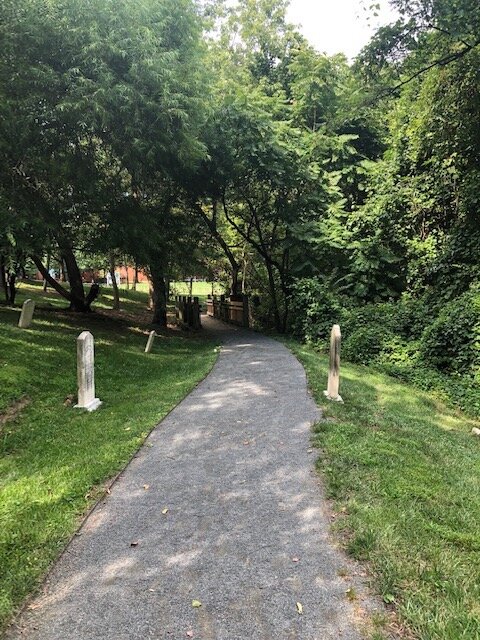Alexandria African American Heritage Park
/A short visit to a near-by place that I usually just drive by. Alexandria African American Heritage Park is at 500 Holland Lane, off of Duke Street.
To orient, you are down the street from a Whole Foods Market and across from modern apartment buildings.
Google Map {although the address is officially 500 Holland Lane).
Look east, across the run, to this:
Alexandria National Cemetery, looking east from Holland Lane, established in 1862.
This is Alexandria National Cemetery, built for Union soldiers during the Civil War. On its other side (not pictured) are other burial grounds established by faith communities mostly in the 1800s. (By the way, you would never know it from the blue sky, but it poured about 30 minutes later.)
The area from where I stood to take this picture also was a burial ground, more modest in scope—an African American cemetery of the Baptist Church and maintained by the "“Silver Leaf (Colored) Society.” Burials took place for about 20 years around the turn of the 20th century.
The elements took over. It seemed “abandoned.” But in the 1970s, a resident reported he had seen several headstones. When construction was proposed for the site in the mid-1980s, a more extensive investigation, including archaeological excavation, began. Twenty-eight known burials took place there (identified in the archaeology through such features as grave shafts and coffin fragments), including six with headstones. The landowner, Norfolk Southern, gave the land to the city.
What should go there instead?
The heart of the area are the few graves with headstones. Most headstones can be read. Their family ties have lasted through the decades: ”My Mother” Matilda Gaines, born in 1837 and died at age 76 // Mary Rome, “Daughter of Mary E. Simms, born in Culpeper co., Feb. 15, 1858, died Jan. 15, 1897.”
A walkways goes by the headstones, through a small wetlands, and up a rise to the western edge of the park. There a group of bronze trees entitled “Truths That Rise from the Roots Remembered” honors the people buried there, as well as six historic African American neighborhoods around the city. (Learn more about them through the Alexandria Black History Museum.)
Each “trunk” lists achievements such as schools, civic associations, and businesses from the City’s African american Past.
When the park was dedicated in June 1995, Pamela Cressey, the city archaeologist at the time, wrote, “It is a natural and meditative place where you can feel the spirit of the past and gain strength of the future.” These days, that’s needed.






